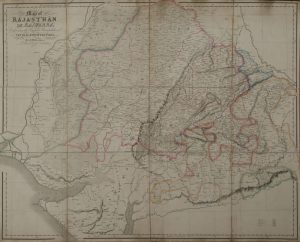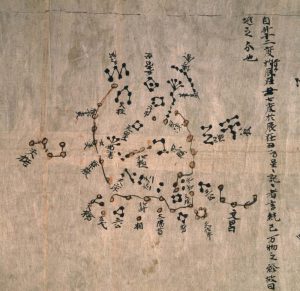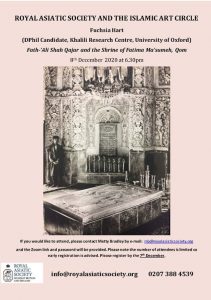Cartographic discoveries across Asian collections
NACIRA Conference:
This week, we attended the virtual conference of the National Committee for Information Resources on Asia. The committee was established in 2008 to provide a forum for professionals that work with collections related to Asia and to improve and promote access to these resources. The theme of this year’s event was ‘cartographic discoveries- Asian maps in UK collections.’ With the society holding a number of unique and distinctive maps, this conference was of particular interest as we work towards making these maps accessible whilst considering the preservation needs of them. Two of our most recent blog posts have touched upon some of the maps that we hold within the collection and can be read below.
https://royalasiaticsociety.org/presenting-the-first-virtual-collections-evening/
https://royalasiaticsociety.org/cataloguing-the-gerald-tibbetts-collection/

The conference highlighted the powerful nature of maps and their historical importance. Maps can exist in various formats and Mélodie Doumy from the British Library talked about the significance of the Chinese star chart which is the earliest known manuscript of the night sky. The scroll was estimated to have been created in the second half of the seventh century and was discovered in a Buddhist library cave. The chart is a beautiful piece to observe and the colours black, red and white were used to plot the different types of stars that had been observed through the naked eye. This item is a pivotal resource for astronomers in providing details of the sky from a period where no further information has survived.

Anne Taylor presented an overview of the different types of maps held at the Cambridge University Library with an estimated 50,000 atlases and books held around Cartography. It was fascinating to learn about three Burmese maps within the collection which were produced on cloth and donated by a teacher of Burmese, Louis Allan Goss. These were created around 150 years ago and are an important historical resource in showcasing routes, landmarks and other features of Burma from that period. Other talks attended were themed around Islamic maps, mapping the Shan states and encountering maps in the Qatar project at the British Library.
If you are interested in finding out more about the conference and the presentations given, these have all been recorded on the NACIRA website at: https://sites.google.com/view/nacira/home
The Extraordinary Epoch of Nanasaheb Peshwa: Book Launch:
On Tuesday 1st December, the society was delighted to host an online book launch with Uday S. Kulkarni, who discussed his new publication, The Extraordinary Epoch of Nanasaheb Peshwa. This book explores the period starting in the mid-eighteenth century when the Maratha Empire was the paramount power in India, reaching its zenith under the reign of Nanasaheb Peshwa. It was in this context that European powers in the south and east started to exert more influence in the subcontinent, such that this period would soon emerge as a crossroads in Indian history. To learn more about this pivotal era in Indian and world history, you can get a copy of Uday’s book here: https://www.amazon.co.uk/Extraordinary-Epoch-Nanasaheb-Peshwa/dp/8192108058
The Extraordinary Epoch of Nanasaheb Peshwa is Uday’s sixth historical work on eighteenth-century India, and we are very grateful to him for joining us for this occasion all the way from Pune, India. As Dr Gordon Johnson and Dr Randolf Cooper explained during the event’s introduction, the greater use of online technology, which facilitates international communication, has been one of the few (hopefully lasting) positives to result from a year which has otherwise proven challenging in so many respects.
Fuchsia Hart Lecture:
Please join us for our final event of 2020 where Fuchsia Hart of the Khalili Research Centre will be giving a lecture titled, ‘Fath-‘Ali Shah Qajar and the shrine of Fatima Ma‘sumeh, Qom’ on the 8th December. This event is already proving extremely popular on our social media channels so early registration for the event is recommended!

If you would like to join us, please email Matty Bradley at mb@royalasiaticsociety.org to register your interest.
